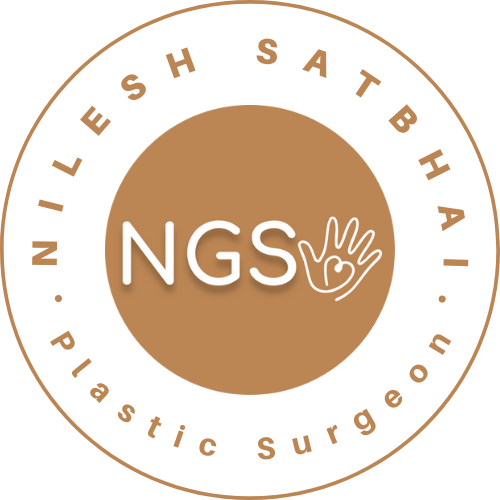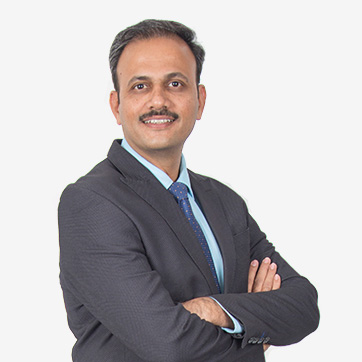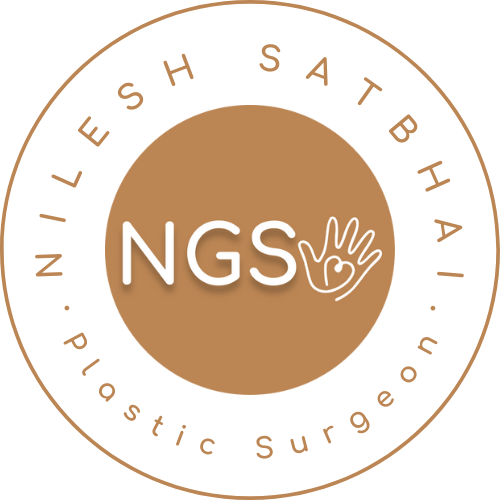The hidden intricacy of our hands: A closer look
The hand is said to be an extension of our mind. This signifies the importance of our hands. Hands perform a wide range of functions. The main functions include power, precision, grasping, holding, lifting an object, and touch. But a hand not only holds, grabs, lifts, or touches, it is also used to express our emotions and gestures.
In the whole living world, only man has a hand that can be used as a tool, weapon, and symbol. The stories of folklore, myth, and legend are based on human hands. The hands represent or symbolize the whole person in drama, art, and dance.
It is also believed that as an organ of performance, it serves as an eye for the blind, a symbol of salutation, prayer, condemnation, and the mute person talks with it. It is known as the highest accomplishment of primate evolution.
The function of our hand is miraculous in its way. Our hands can manipulate objects to achieve any goal. The hands can apply a certain precise amount of pressure and force required to hold an object in a particular position due to the stability and mobility provided by the skeleton, strong muscles, and nerves that send feedback.
After our face, our hands are the most visible part of the body.
Hands are our means to interact with our surroundings, perform work, earn livelihood, express thoughts and emotions, play instruments, and recreate. Impairment in hand function can lead to impaired skills required in one’s occupation, social, and academic activities.
Anatomy of the hand
The anatomy of our hands is complex and intricate. It can perform a wide range of movements due to its unique anatomy. Hands are classified as a composite tissue as they have multiple tissues, such as muscles, tendons, bones, nerves, blood vessels, fat and skin. All are positioned optimally to achieve smooth and efficient hand function.
The human hand comprises twenty-seven individual bones: eight carpal bones, five metacarpal bones, and fourteen finger bones (also known as phalanges). Joints and ligaments connect these bones. Almost one-fourth of all our body’s bones are found in our hands.
The hand can be broadly divided into three different areas based on joints:
- Carpus (wrist)
- Metacarpus (palm)
- Fingers
Carpus (Wrist)
The articulation of bones at the wrist joint is important to flex (bend) or extend (stretch) our hands. It helps to move the hands sideways.
The eight carpal bones are connected by strong ligaments and are mounted in a stable but dynamic position. There are two rows of carpal bones, four in each row. The carpal bones articulate with forearm bones (radius and ulna) to form the wrist joint, which provides a spectrum of hand movements in addition to tremendous grip strength.
Metacarpus
Metacarpals are the five long and slender bones in the palm of the hand. These bones are felt on the back of your hand. The metacarpals provide a platform for the fingers. The metacarpal bones provide attachment to the important intrinsic muscles of the hands, which are essential for the finer hand movements.
Fingers
These are made up of three different bones. The thumb has only two bones. The interphalangeal joints of fingers and the thumb are of a hinge variety and help to bend and stretch fingers in one direction only.
But the basal joint (carpometacarpal joint) of the thumb is very different and special. It is of a saddle variety and it allows the thumb to be significantly versatile. The human thumb can move in multiple directions and its ability to perform opposition (turning towards and reaching the other finger tips) is the greatest evidence of our evolution.
Muscles
There is a unit of over thirty muscles within our hand, operating along in a very advanced approach.
Thenar and Hypothenar muscles
These are two sets of powerful muscles within the hand. The thenar eminence (at the base of the thumb) and the hypothenar eminence (at the base of the little finger) are responsible for the additional movements and strength of the thumb and the little finger, as compared to the other fingers.
Lumbricals and Interossei
The four lumbricals of the hand are lean, worm-like muscles that facilitate bending the knuckles at the metacarpophalangeal joints and extending the fingers.
The interossei are the short muscles between the individual metacarpal bones of the hand. These permit us to unfold our fingers (abduction) and pull them back along (adduction). They additionally facilitate the ability to bend and stretch the fingers.
Carpal tunnel
Muscle, tendons, nerves, and blood vessels from the forearm pass distally to the hand through a tunnel-like passage on the palmar aspect of the wrist bones, referred to as the Carpal Tunnel.
The thick fascia covering the carpal tunnel is known as the transverse carpal ligament. Carpal tunnel syndrome is the commonest compression neuropathy of the median nerve.
Nerves
The nerve supply of the hand is too complex. Three nerves mainly supply the hand, namely the median nerve, ulnar nerve, and radial nerve.
Development of hand surgery
Due to its complex structure and wide use, injuries and infections of the hand are common. Industrial accidents, sports and workplace injuries are also common. The need for proper management of various hand conditions has led to the emergence of the field of hand surgery.
Hand surgery incorporates diverse techniques from plastic surgery, orthopedics, microvascular and reconstructive surgery.
The commonly performed procedures in hand surgery are tendon repairs, nerve repairs, vascular repairs, tendon transfers, skin grafting, flap reconstruction, burn injuries, fracture fixation, correction of hand deformities following rheumatoid and Hansen’s diseases, Volkmann’s ischemic contractures, congenital deformities, brachial plexus and peripheral nerve sugery, replantation, revascularisation, transplantation and much more.
The evolving field of hand surgery
Microsurgery has made substantial progress today. The first successful replantation of a shoulder level amputation in May 1962, revolutionised the standard of care and this has resulted in the salvage of many fingers and hands. The emphasis in replantation now is not only on the survival of the part, but mainly on the functional outcome.
With a deep understanding of vascular anatomy and the technological advances in microsurgery, free flaps have now become a mainstay for coverage of large and complex wounds and defects. It helps to meet the recipient’s needs and also reduces donor site morbidity.
Microsurgical reconstruction of amputated limbs, repair and reconstruction of soft tissue and bone, nerve reconstruction, and surgery for paralyzed upper limbs have steadily increased in recent years.
There have been other various recent advances in neural repair and regeneration for hand surgery. Some of them are listed below:
-
Neurorraphy: End-to-end repair of nerves and nerve grafts are regarded as gold standard methods to repair and reconstruct peripheral nerves. Microsurgical technique and a deep understanding of the topographic anatomy of different nerves at diverse locations are the keys to success. When the distal nerve is unavailable, the end-to-side repair is carried out to preserve function and prevent donor site morbidity.
-
Suture-less nerve repair: Tissue glue is commonly used to carry out suture-less nerve repair. This prevents foreign-body inflammatory reactions and fibrosis.
-
Nerve allografts and xenografts: Nerve allografts and xenografts are used as temporary scaffolding. It helps the axons to regenerate.
-
Molecular and cell therapy: Cultured Schwann cells are now used to improve nerve rejuvenation.
-
Brachial plexus injury repair: Brachial plexus injury is a difficult clinical problem. Various methods of reconstruction surgeries that include nerve transfers and free-functioning muscle transfers now give hope to those suffering from such injuries.
-
Advances in internal fixation: Rigid fixation of small bone fractures of the hand is a major refinement in hand surgery.
-
Burn injuries to the hand: The hands are common as the the hands are exposed and often used to protect the other body parts from burns and injuries. Active traetment and early surgery are often recommended. The advantages of such surgeries include:
- Better scars
- Avoidance ofcontractures and deformities
- Faster recovery and resumption of work
-
Sports and traumatic injuries of the wrist: Traumatic injuries caused in sports, mainly in the wrist or fingers. Overuse syndromes and ligament tears are common. The next most common injuries include fractures of the distal radius and scaphoid. Types of treatments for such injuries range from splinting, casting, open or minimally invasive surgical treatment, physiotherapy and occupational therapy.
-
Management of spastic conditions of the upper limb: The most common causes of upper limb spasticity are stroke, spinal cord injury, traumatic brain injury, multiple sclerosis, and cerebral palsy. Now there are many effective methods to manage and treat upper limb spasticity.
-
Management of arthritis of the basal joint of the thumb: The treatment is often customised according to the severity of the problem and age, profession and requirements of the patient.
There is still so much to learn about hand anatomy and function. This really makes hand surgery an exciting field to explore.
Choosing a surgical team with skill and experience in hand surgery is essential as it is a major determinant in the success of the surgery.
Dr. Nilesh Satbhai is a surgeon in Mumbai with over 15 years of experience in brachial plexus reconstruction surgery, microsurgery, and hand surgery. If you suffer from any type of hand injury, Dr. Nilesh can provide you with the highest quality of care. Contact Dr. Nilesh Satbhai at 022-67670101 or plasticsurgerymumbai@gmail.com .
Request Appointment





